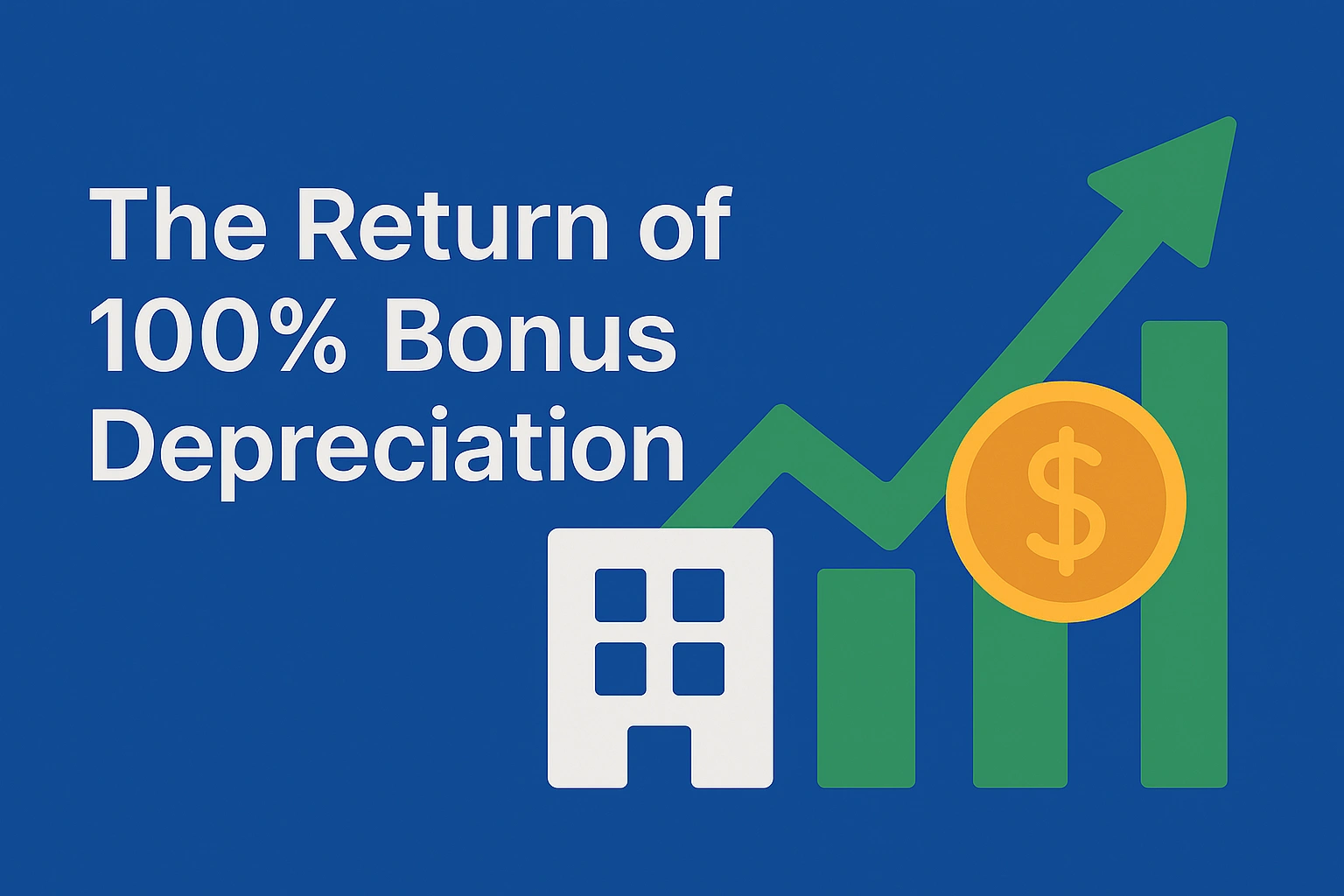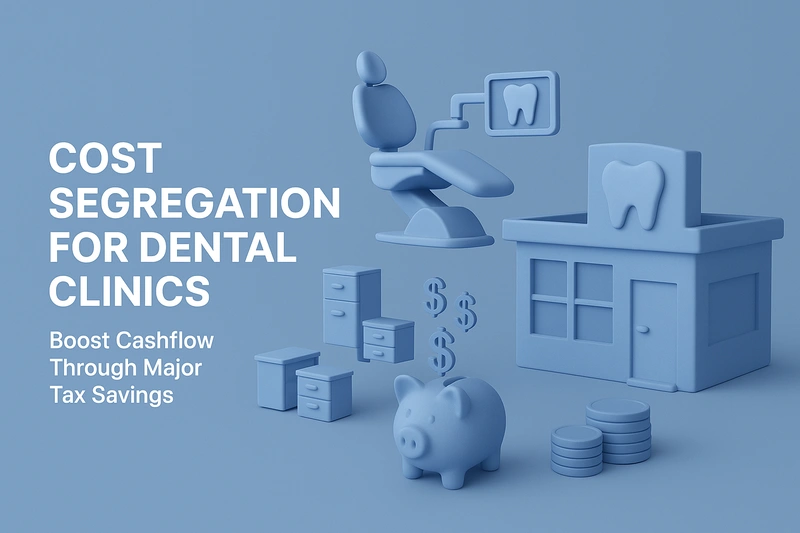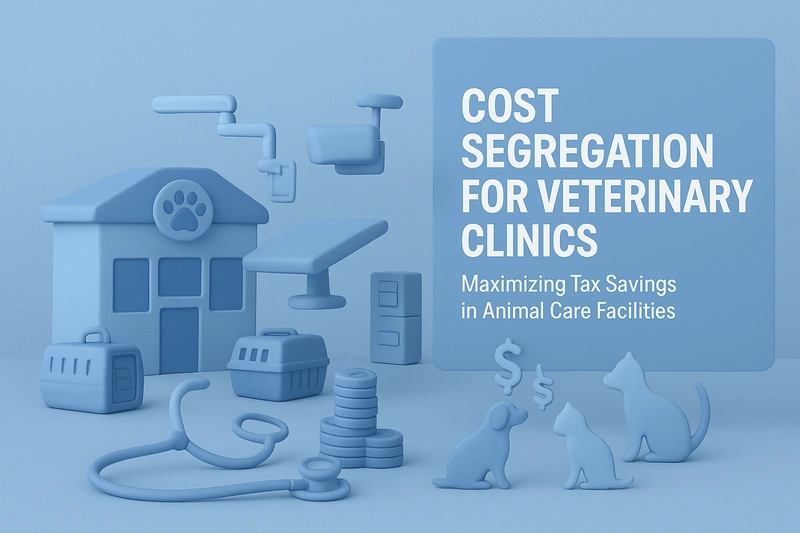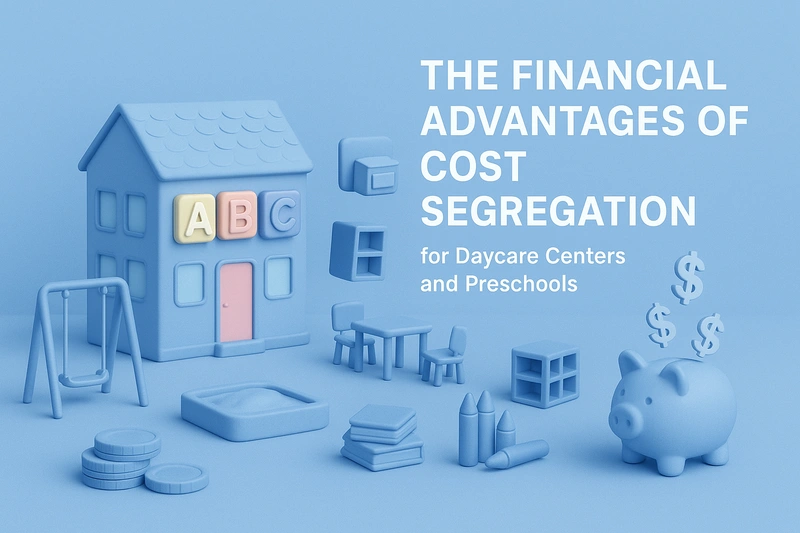This post reflects cost segregation and bonus depreciation rules at the time of original publication. On July 1st 2025, Congress passed new legislation, the One Big Beautiful Bill Act, which made 100% bonus depreciation permanent for qualifying properties acquired and placed in service after January 19, 2025. For the most up-to-date guidance, please read our latest update here: Bonus Depreciation in 2025 and Beyond: The Ultimate Guide for Real Estate Investors.
--
Real estate investors have faced significant headwinds. Rising interest rates and persistent inflation have depressed property values, creating a gap between seller expectations and buyer willingness. But a second challenge has been quietly building: the steady decline of bonus depreciation rates.
From 2017 to 2022, investors enjoyed 100% bonus depreciation under Trump's original tax bill. This powerful incentive allowed immediate write-offs for qualified property improvements.
Then came the phase-down. Rates stepped down to 80% in 2023, 60% in 2024, and 40% in 2025. Each reduction diminished the immediate tax benefits of deploying capital into real estate.
Now, everything might change again.
The Proposed Return to 100%
The House Ways & Means Committee has released amendments to what's being called the "One Big Beautiful Bill." At its core: the return of 100% bonus depreciation through 2029.
Unlike previous legislation with gradual phase-downs, this proposal maintains full bonus depreciation for four years, then drops immediately to 0% in 2030.
For real estate investors, this creates a clear strategic window. The proposed changes would be retroactive to January 2025 when Trump was sworn in, giving investors confidence to move forward with transactions now.
This return to 100% would create an immediate 60% improvement in first-year depreciation benefits for qualifying property compared to current rates. This represents a significant financial opportunity for property owners conducting cost segregation studies.
Manufacturing Facilities: The Biggest Winners
While all property investors stand to benefit, manufacturing facilities could see unprecedented advantages.
The bill includes provisions to "temporarily provide 100 percent expensing of qualifying structures in manufacturing, extraction, and agriculture sectors for which construction begins before the end of 2028 and placed in service date occurs before the end of 2032."
This effectively transforms manufacturing facilities into fully bonus-depreciable assets, similar to how gas stations are treated under current tax law.
For investors, this change is substantial. Properties that previously had significant portions allocated to 39-year depreciation schedules could now qualify for 100% immediate write-offs.
The implications are powerful. When investors put equity into manufacturing facility deals with any form of leverage, they may be able to deduct more than their original equity investment. This creates essentially "post-tax" investment opportunities that could spur significant new capital deployment.
This aligns with the broader "Make America Great Again" initiative to bring manufacturing back to America, particularly in light of proposed tariff changes.
Strategic Timing Considerations
The fixed end date of 2029 creates unique planning considerations. Unlike previous legislation with gradual phase-downs, the proposed bill creates a "cliff edge" where bonus depreciation would drop from 100% to 0% overnight.
This structure could create a significant rush of investment activity as the deadline approaches.
We've seen similar patterns during previous transitions, such as the step-down from 100% to 80% between 2022 and 2023. However, the proposed cliff edge is much steeper and could drive more pronounced timing decisions.
For real estate investors planning major acquisitions or improvements in the next five years, this creates a predictable planning horizon with a clear deadline.
The Increased Value of Cost Segregation
Cost segregation studies become significantly more valuable under 100% bonus depreciation. These studies identify components that qualify for accelerated depreciation schedules, and with 100% bonus, these components can be immediately written off.
For R.E. Cost Seg clients, the difference between 40% bonus depreciation (current 2025 rate) and 100% bonus would be substantial. It transforms cost segregation from a valuable tax strategy to a potentially decisive factor in investment decisions.
What Should Investors Do Now?
While the bill still has a legislative journey ahead through the House, Senate, and to the President's desk, investors can approach this opportunity with cautious optimism.
The proposed return of 100% bonus depreciation appears to be a priority for the administration. All indications suggest it will be retroactive to January 2025 if passed.
For investors considering transactions now, it's reasonable to assume some form of enhanced bonus depreciation will be available. Those who want absolute certainty might wait until final passage, potentially by July 4th.
The most prudent approach is to stay informed about the bill's progress while continuing to evaluate investment opportunities with the assumption that enhanced depreciation benefits will materialize.
Ultimately, while bonus depreciation alone may not drive transaction decisions, its return at 100% would significantly enhance the economics of real estate investment and make cost segregation studies even more valuable for property owners nationwide.






